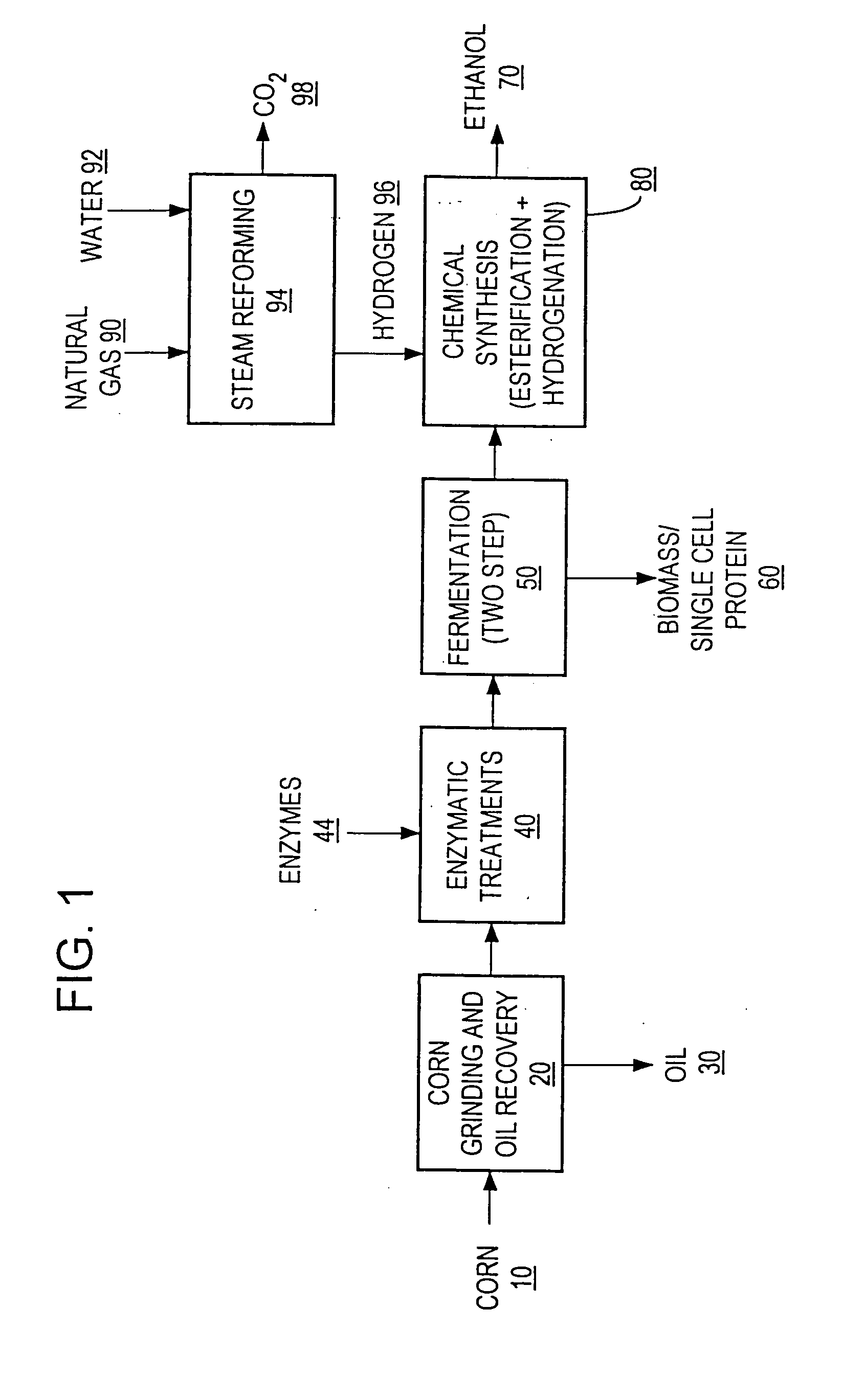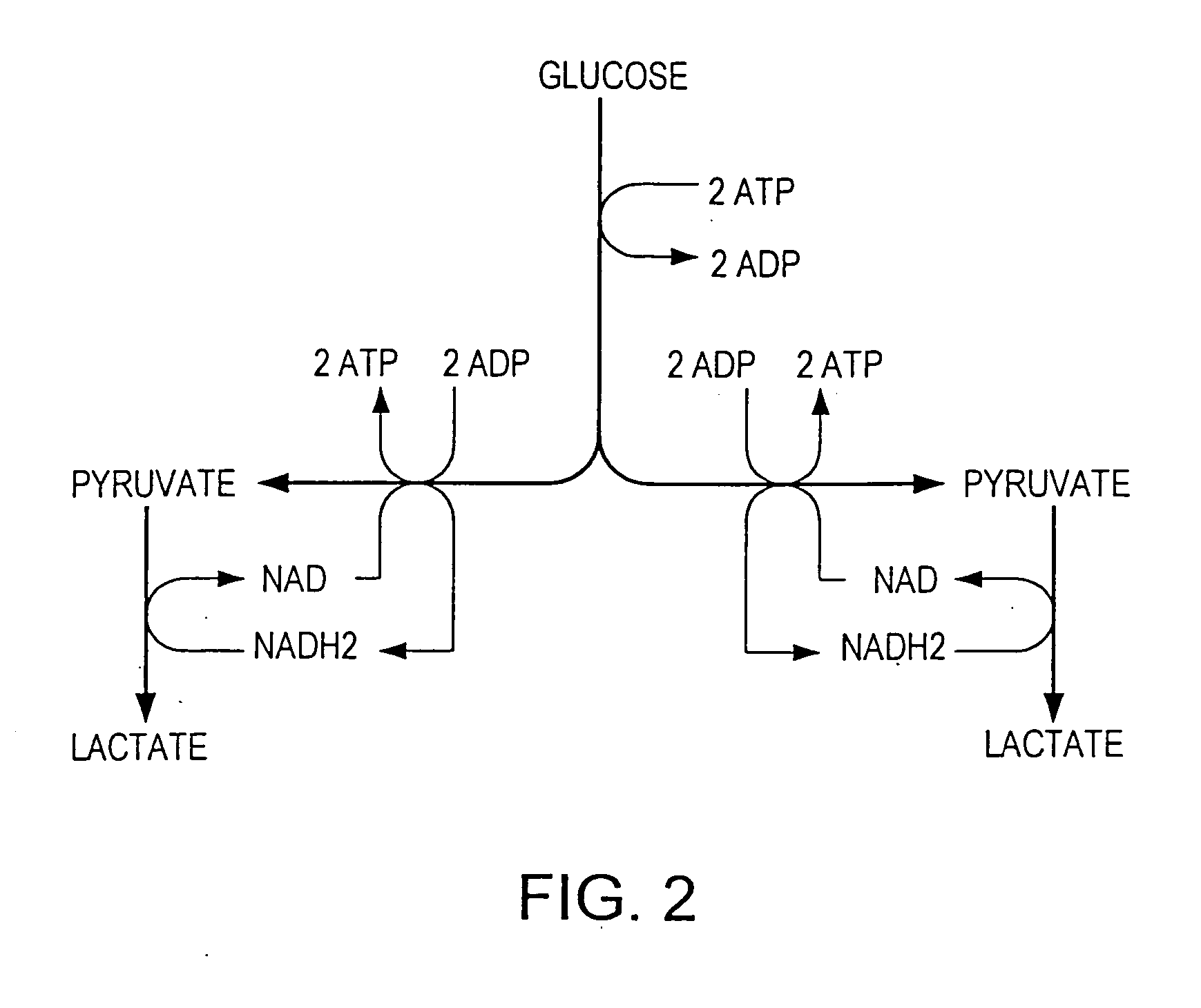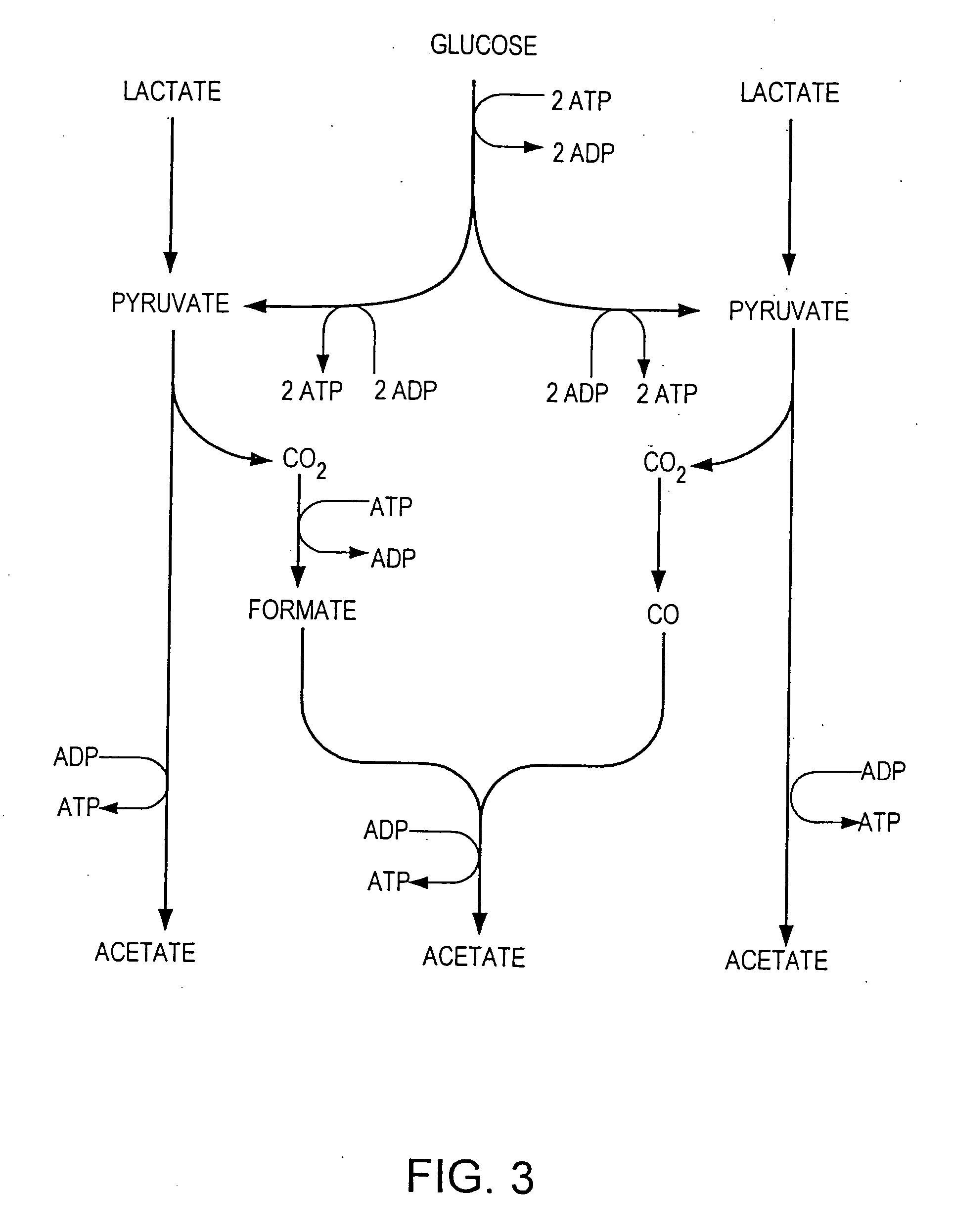Process for producing ethanol
a technology of ethanol and process, applied in the direction of biofuels, organic chemistry, chemistry apparatus and processes, etc., can solve the problems of limited ability of yeast to utilize sugars other than glucose, limit the economic production of ethanol, and become a burden on the environment, so as to increase the concentration of protein, increase the value, and high carbon yield of ethanol
- Summary
- Abstract
- Description
- Claims
- Application Information
AI Technical Summary
Benefits of technology
Problems solved by technology
Method used
Image
Examples
Embodiment Construction
[0042] One embodiment of the ethanol process of the present invention uses a unique combination of enzymatic milling, indirect fermentation, and chemical synthesis to produce a slate of high valued products. FIG. 1 is a simplified block flow diagram for the process. Corn 10 is ground 20 the oil 30 is extracted, and the remaining material is then enzymatically converted 40 using enzymes 44 into fermentable sugars and amino acids. Acetic acid and bacterial biomass 60 are produced by a two step fermentation 50. The first step uses a lactic acid bacteria such as Lactobacillus casei to convert the fermentable sugars into lactic acid. The second fermentation step uses an anaerobic bacteria such as Clostridium formicoaceticum to convert the lactic acid and residual sugars from the first fermentation into acetic acid without any CO2 byproduct. This combination of fermentation steps results in a high yield of acetic acid with the coproduction of bacterial biomass 60 that can meet the US FDA ...
PUM
| Property | Measurement | Unit |
|---|---|---|
| distance | aaaaa | aaaaa |
| distance | aaaaa | aaaaa |
| pH | aaaaa | aaaaa |
Abstract
Description
Claims
Application Information
 Login to View More
Login to View More - R&D
- Intellectual Property
- Life Sciences
- Materials
- Tech Scout
- Unparalleled Data Quality
- Higher Quality Content
- 60% Fewer Hallucinations
Browse by: Latest US Patents, China's latest patents, Technical Efficacy Thesaurus, Application Domain, Technology Topic, Popular Technical Reports.
© 2025 PatSnap. All rights reserved.Legal|Privacy policy|Modern Slavery Act Transparency Statement|Sitemap|About US| Contact US: help@patsnap.com



